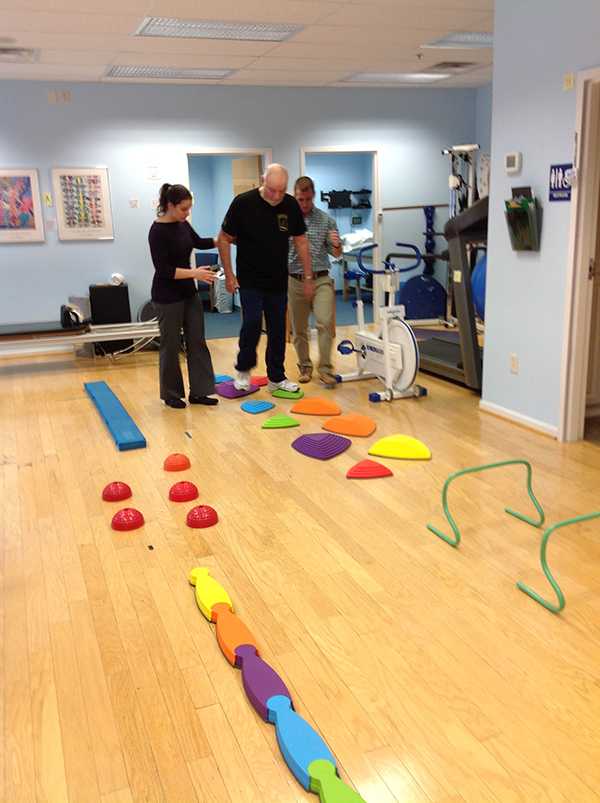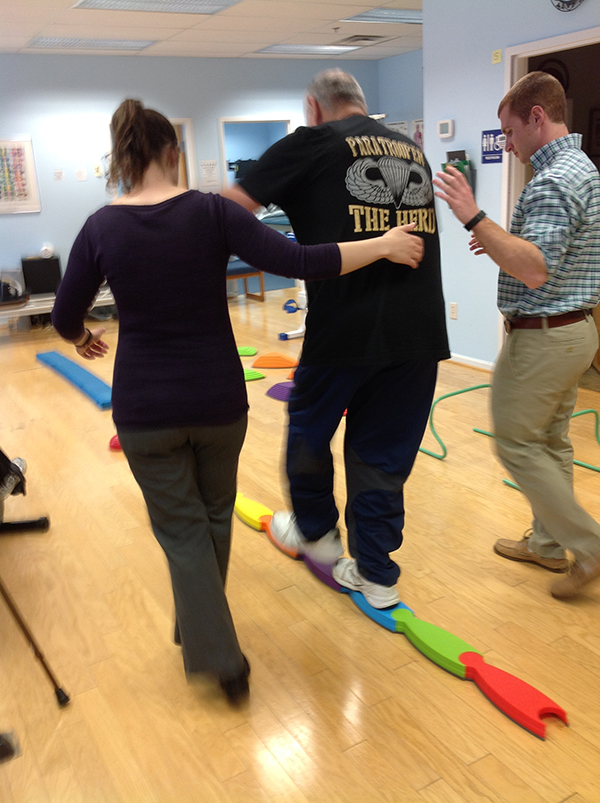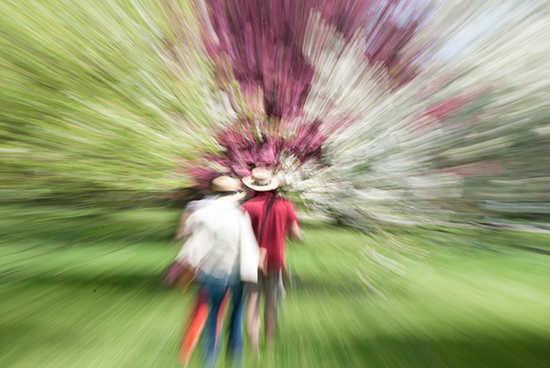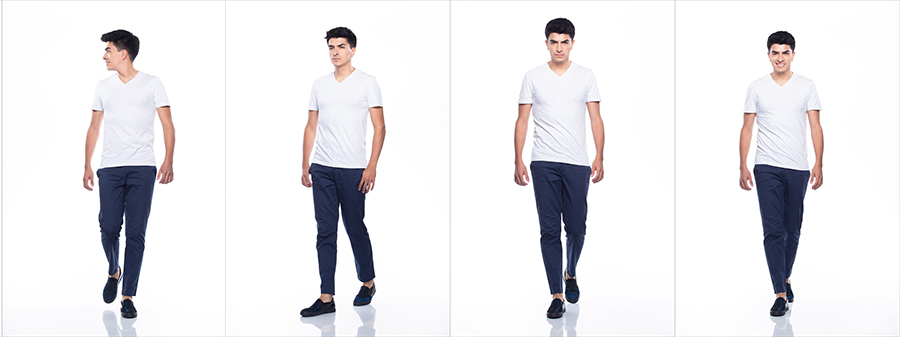Is it uncomfortable for you to stand still while having an unexpected conversation? Are you looking for something sturdy to rest your hand on? Perhaps you second-guess invitations to picnics or sporting events because walking on the grass is challenging. Maybe you find yourself parking closer and closer to the shopping cart corral so that you have something to lean on to get into the store.
These are all typical behaviors reported in our physical therapy clinic. Not all patients come to us because they have vertigo or are spinning. Many people who arrive at our clinic report limiting their social activities and the hobbies they enjoy due to feeling less confident on their feet. Not all have fallen; some just experience stumbling and tripping at times.
Balance, your body’s ability to keep your center of mass over your support base, is something we often take for granted until we struggle with it. Physical therapy can be beneficial in restoring your balance when it is compromised.

Our bodies rely on peripheral feedback systems to give the brain the information it needs to stay upright and avoid falling. The three sensory systems include our vision, proprioception, and vestibular systems.
First, let’s discuss the role your vision plays in balance. Your brain relies on this to learn how your body fits in the surrounding environment. For example, if you see people coming toward you or the ground is uneven up ahead, adjust accordingly.
Next, you rely on information from your proprioceptors. These are the sensors in your joints, muscles, and skin that provide information to your brain about where your body is in space. Let’s pretend you are walking down a slope right now. Pressure from your shoe against your foot, a stretch to the muscles in front of your lower leg, and a slight bend in your knee inform your brain that you are on a decline. Someone with peripheral neuropathy, an artificial joint, or an injury can have impaired proprioceptive feedback.
Lastly, the vestibular system also provides your brain with information about your movement in space. This is found in your ear, beyond the eardrum. The system has five end organs, including the utricle, saccule, and three semicircular canals. The utricle and saccule have small hair cells that detect horizontal and vertical acceleration, such as riding in a car or going up an elevator.
The fluid-filled semicircular canals detect rotational movement in different planes. When your head turns, the left and right vestibular systems generate an impulse based on the fluid shift. This impulse travels to the brainstem and directs the appropriate muscular and visual responses that keep you moving smoothly. When both the left and right vestibular systems are healthy and work together, these adjustments are typically not noticed. But people with damage or weakness in one or both vestibular systems may feel unsteady on their feet, dizzy, or disoriented (as if their eyes are bouncing).
When patients arrive at WWSPT with complaints of unsteadiness, we look at their whole medical picture. We thoroughly review their history to identify variables that may be influencing their balance. Do they have chronic back pain or diabetes that may impair their sensation? Have they been on medications that may impact the function of their vestibular system? Are they smokers, have they experienced migraines, and have trouble multitasking? These are just a few questions we may ask that are extremely helpful in identifying possible contributing causes to patients’ imbalance.
After reviewing their history, we evaluate how they move. Is one hip weaker than the other? Are stairs difficult? Is there a difference when walking on a smooth indoor surface and going outside? Do busy environments suddenly make them reach for support?
Next, we thoroughly evaluate their vestibular system and how the vestibular ocular reflex or VOR reflex works. We screen them for benign paroxysmal positional vertigo and evaluate their balance statically and dynamically.
First-time patients may feel intimidated by the “strange” exercises they see other patients doing in the gym. Our expertise in balance training allows us to incorporate patients’ individual goals into their therapy. Patients who struggle with talking to their friends while on a walk may be asked to walk, turn their heads, and simultaneously list their weekly grocery items. A hiker, who misses walking in the woods, may find him or herself stepping across our river rocks while wearing a weighted vest. We like to keep it interesting!
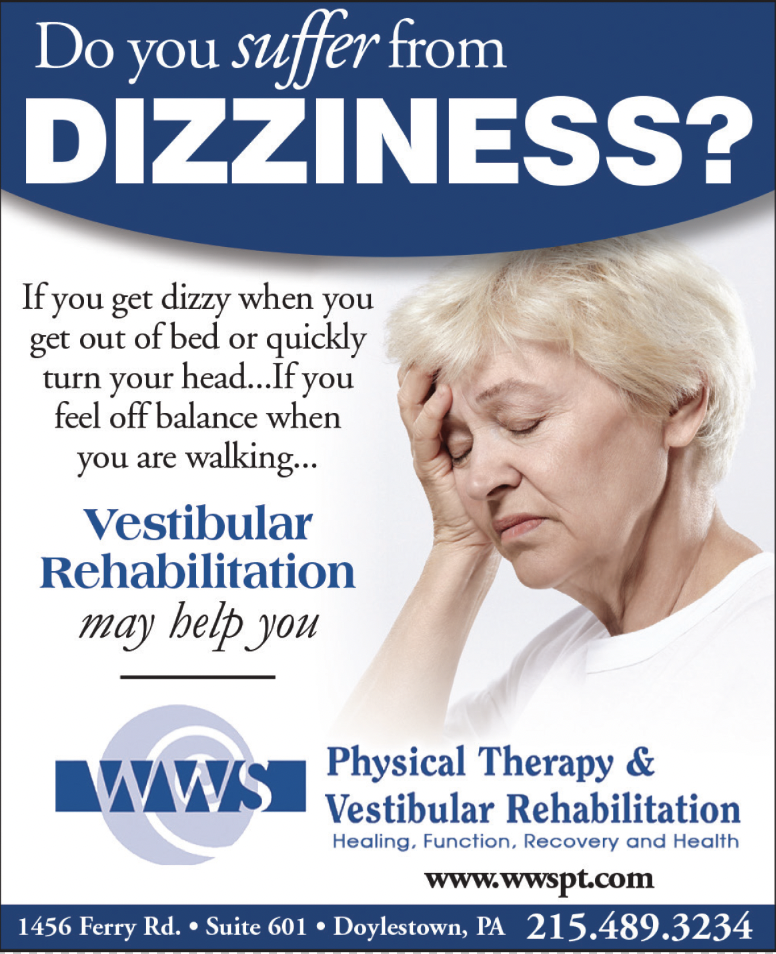
If you have noticed something doesn’t quite feel right in your movement, do not simply accept imbalance as a part of aging. If left untreated, this could lead to a fall. Falls are the leading cause of fatal and nonfatal injuries in adults over 65. Enhancing your balance system through physical therapy can help you maintain your independence and the quality of life you enjoy. Be your advocate. Please get in touch with WWS Physical Therapy and Vestibular Rehabilitation, Doylestown, PA., for your balance assessment and treatment plan!
Dr. Jenna L. McLane, PT, DPT,

